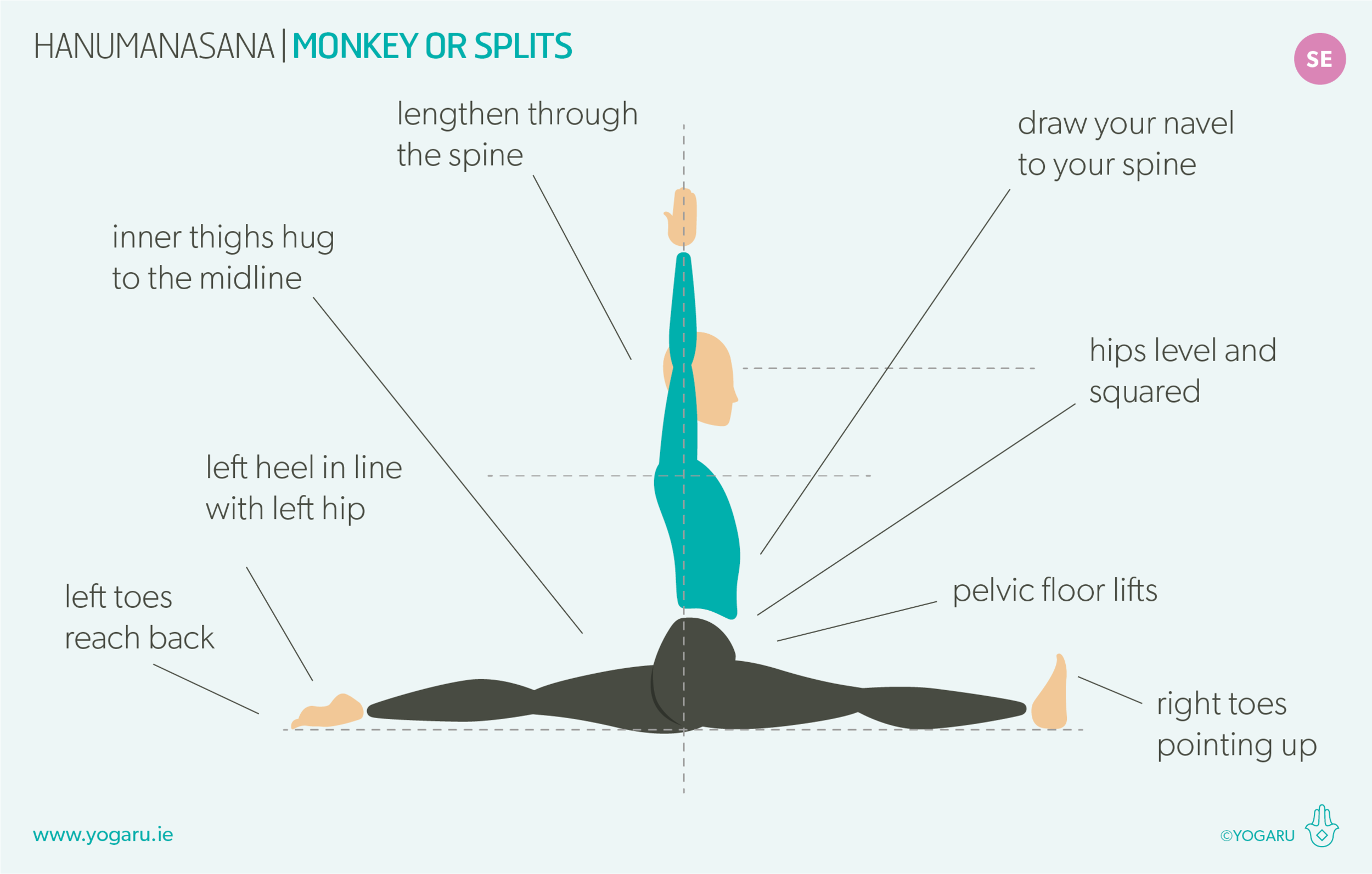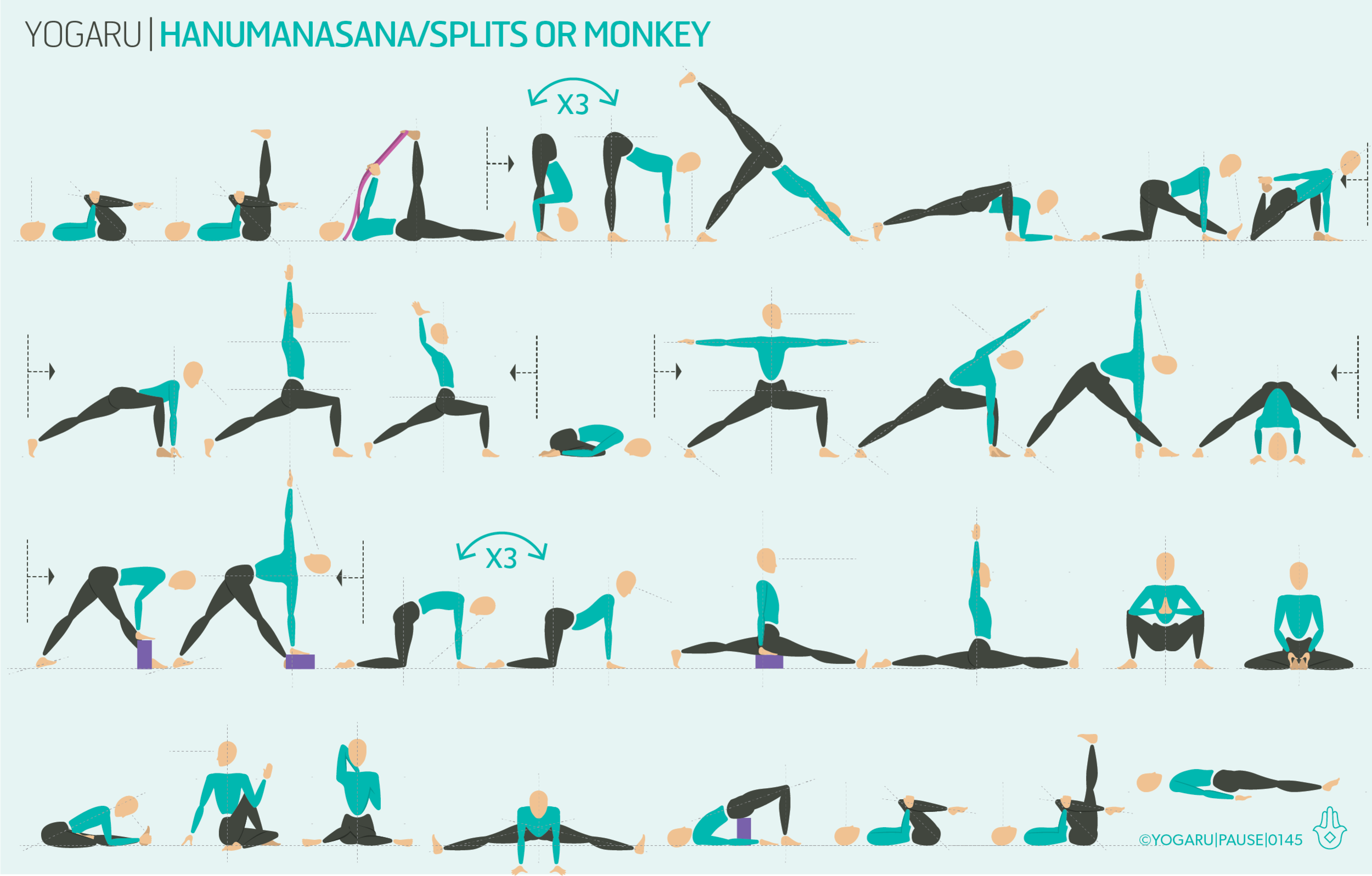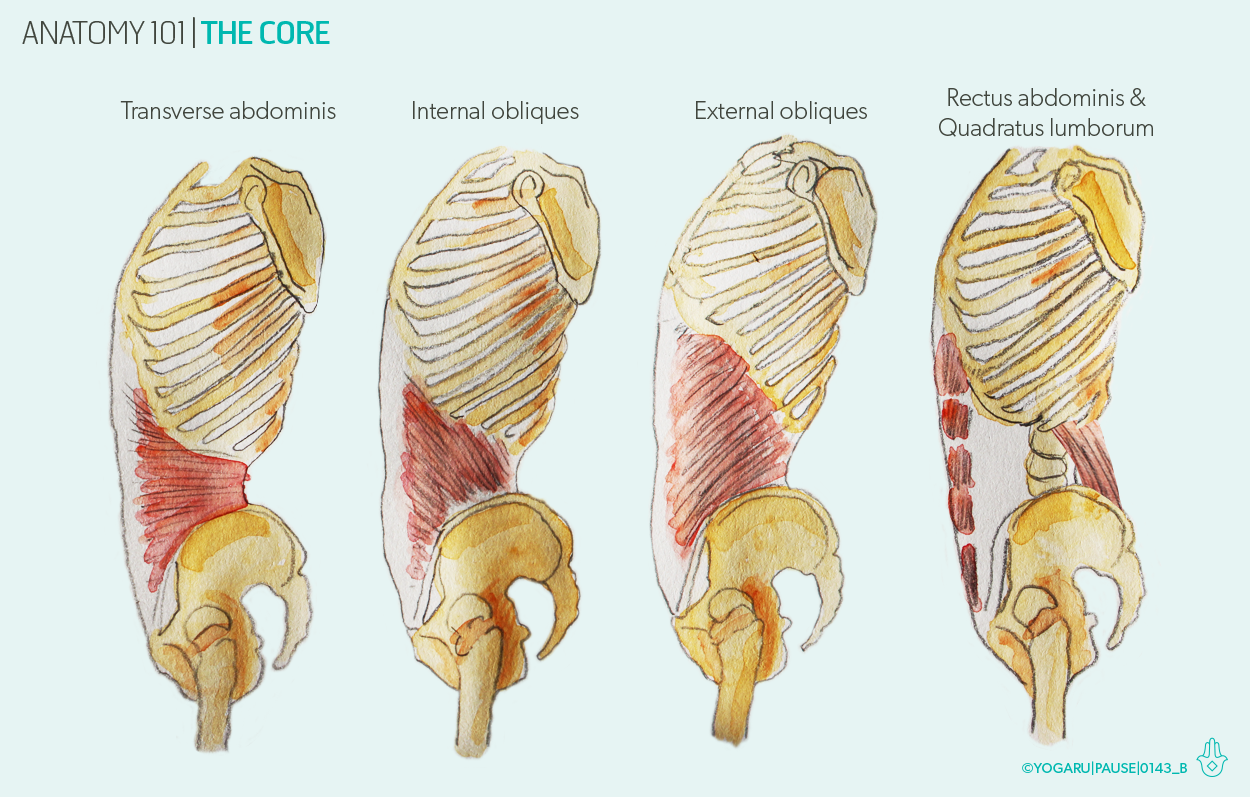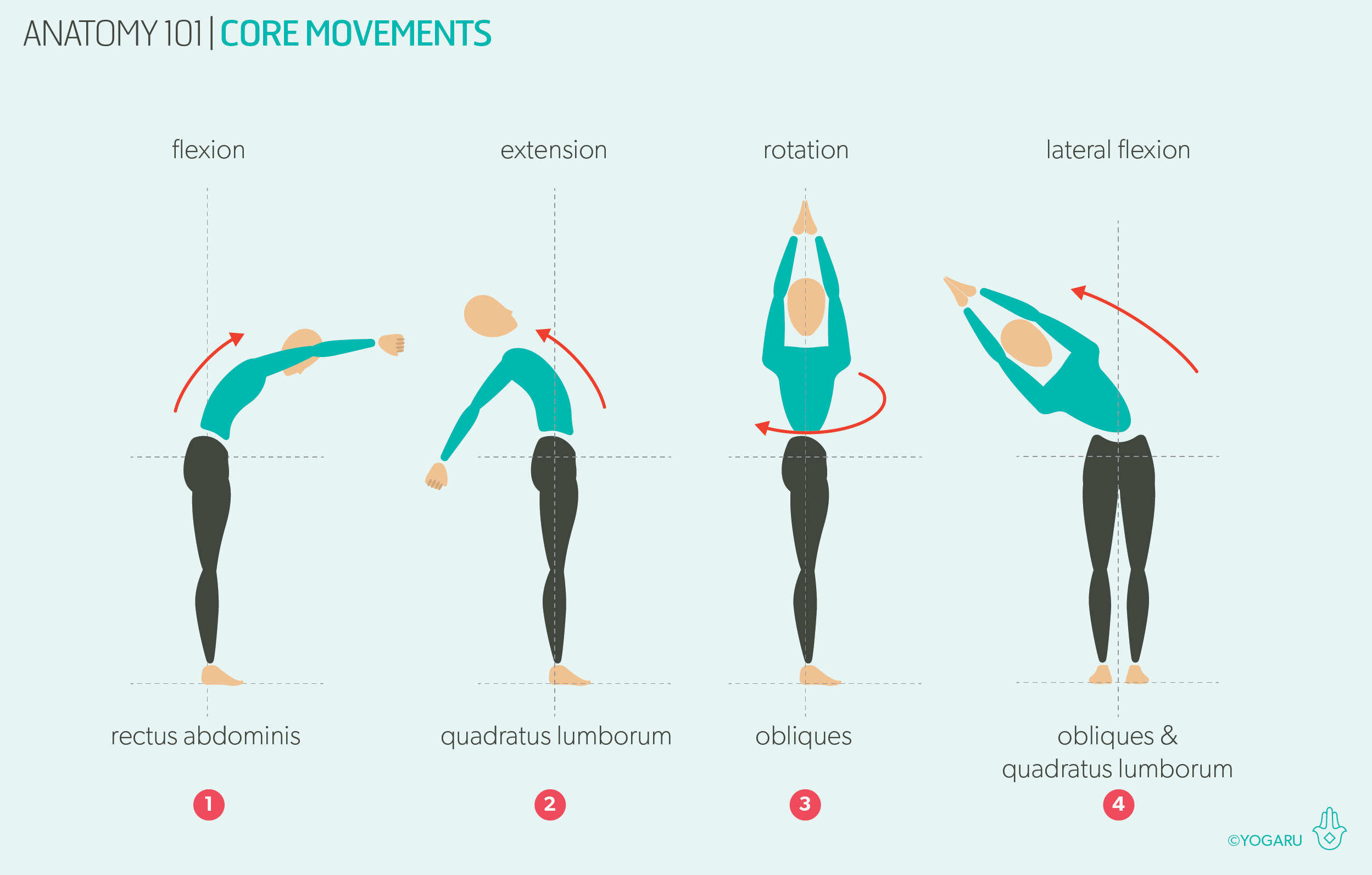GOD OF MONKEYS
Splits, or ‘monkey pose’ named after the God of Monkeys Hanuman, is a very challenging pose for most of us – especially if you are a runner, cyclist, or a gym goer. It falls into the ‘hip opener’ category, and stretches the hamstrings in the front leg, and the hip flexors of the back leg. Hip openers are one of those poses that definitely have a feel good factor. They are the most requested poses in a yoga class, and are known for releasing stress, tension and anxiety – physically and emotionally. The psoas (one of the hip flexor muscles) is linked with the ‘fight or flight’ response. When this muscle is tight the fight or flight response is constantly being triggered – leaving you feeling stressed, anxious and exhausted. When it is stretched it stimulates the opposite reaction – the ‘rest, restore and digest’ response. Which is why you feel a calm and happy demeanor after a good hip opening class.
Hanumanasana/Monkey or Splits also help you with your transition into Adho Mukha Vrksasana/Handstand. Handstands are all about getting your hips stacked over your shoulders – the more open your hamstring are, the higher you can lift your top leg, the easier it is to hop up into handstand. This sequence would be a good prep if you are working on your Adho Mukha Vrksasana/Handstand.
Hanumanasana/Monkey or Splits challenge your ego and teach you (sometimes the hard way!) to listen to the messages from your muscles, and respect your limitations. The hamstrings and hip flexors are big muscles and need time to release. Move slowly and take extra time in the prep poses, breathe deeply and let the muscle dictate when it is time to progress. It is a pose that should be approached with care and an ability to tap into feedback from the stretching muscles. The hamstrings in particular are prone to overstretch injuries and an over enthusiastic Hanumanasana/Monkey or Splits can leave you with an overstretch injury for upto 6 to 8 weeks or longer.
THE BENEFITS OF HANUMANASANA/SPLITS OR MONKEY
Hanumanasana/Monkey or Splits is a deep hip opener. It stretches the hamstrings, hip flexors, inner groins and glutes. It counteracts tight hips and the effects of sitting for long periods of time and helps the hips move freer and assists with mobility in everyday activities. It is also a lovely grounding pose, helps balance the nervous system and eases stress, tension and anxiety.
EXPLORING HANUMANASANA/SPLITS OR MONKEY IN YOUR PRACTICE
This sequence will gradually warm up your hamstrings and hip flexors. You will have plenty of opportunities to ease them open, so very gently at the start with the supine leg stretch. Move slowly and carefully to ensure you do not overstretch the hamstrings. The best lesson to learn as a yogi is the difference between an opening stretch and a pinchy stretch, which can be an indication of an overstretching muscle.
If your hips are quite high up when you come into Hanumanasana/Monkey or Splits place a bolster, or some cushions, under your pelvis to help support you in the pose. If your hips still don't reach the bolster comfortably, push the bolster further down your front leg, just under your thigh which will support you from the front leg. If you don’t quite need this amount of lift, use a brick or a rolled up blanket under your pelvis for support, as illustrated in the sequence.
Place your hands on bricks, or piles of books, either side of your hips to help you keep your chest open and your hips squared to the front on your mat. Focus on keeping the hips level rather than getting your hips to the ground.
If your hamstrings are not comfortable in any of the above versions, have a look at my Instagram post for some different versions of Hanumanasana/Monkey or Splits.
ALIGNMENT CUES
This is definitely a sequence to link your breath with your movement. Pause in the poses where you feel the hips opening and use the inhale to retract slightly from the pose and the exhale to soften into your comfortable range of movement.
Have a read of the tips below and either print out the sequence or save it onto your device:
From Anjaneyasana, place your hands on bricks, or the ground, either side of your hips, gradually straighten your right leg, slide your heel forward along the ground.
At the same time slide your left leg back, reach the top of the foot back along the ground.
Keep your hips level and squared as you dip your hips down, working towards your pelvis sitting on the ground.
Hug your inner thighs and hips to the midline. Right toes pointing up, left heel in line with your left hip joint.
Lengthen through the spine. If your hips are grounded, reach your arms up high, gaze forward.
To save the images for personal use click and hold down the image until the ‘save image’ option appears; on Mac hold down ‘control’ and click the image to get the option box; on PC right click on the image to get the option box. Scroll down in the ‘option box’ and click ‘save image’.
Ruth Delahunty Yogaru









